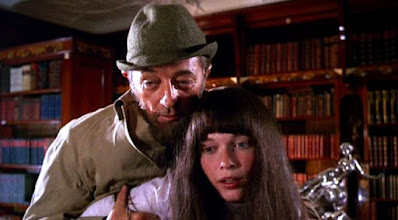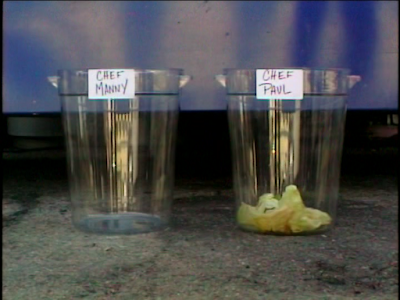Director: Philippe Grandrieux
Screenplay: John-Henry Butterworth, Philippe Grandrieux,
Bertrand Schefer and Rebecca Zlotowski
Cast: Kristian Marr as Lenz; Ariane Labed as Hélène;
Roxane Mesquida as Lena; Paul Hamy as Louise; Johan Leysen as Vitali; Sam
Louwyck as L'homme à la voix métallique; Aurélien Recoing as Paul
An Abstract List
Candidate
To my surprise, a film by Philippe Grandrieux was released in the United Kingdom, on a regular old DVD from Matchbox Films, with few probably knowing the existence of this French filmmaker himself first. This is my first Grandrieux film too, to which I was however aware of him, spoken with an aura for a film like Sombre (1998) which, among the number of directors behind the New French Extreme film movement, was visually and tonally distinct. His work, in stills, is in the territory of the avant-garde or at least expressionist, visually driven work. He has sadly never been released at all in the United Kingdom baring a case like this.
Despite the Night exemplifies a distinct aesthetic which will be difficult to really describe even with screenshots. A lot of this narrative is set at night; extreme close-ups and characters in their own voids as a result like background, with rarely any long shots baring a few and a pronounced used of strong front lighting. Particularly with the scenes drawn out, the film two and a half hours long, Grandrieux's style in Despite the Night does suck you in, trap you into its world, especially as the plot does hold back from a lot of context and forces you to have catch snippets.
The plot itself is simple to digest. Lenz (Kristian Marr), a British musician, returns to France to find Madeleine; she is absent, so he finds himself with Hélène (Ariane Labed), a married woman who due to losing her son has fallen in a self-destructive sexual cycle. In this triangle you also have Lena (Roxane Mesquida), a singer who is in love with Lenz, and whose father she has a creepy almost incestuous relationship with and is a corrupt man of wealth, with the connections to allow him to make anyone disappear. Here is where the dichotomy lies, where this is a film whose director is talented but the material is of issue. Despite the Night feels of a figure that, since the nineties, has perfected a style entirely of his own, with content that is entirely distinct. One could fall on a comparison like David Lynch, but that barely if actually succeeds with telling of who Philippe Grandrieux is, who here makes a prolonged length drama that is yet oppressive in a subtle way, and moves into more transgressive material along the way. That transgressive material is where the issues lay.
Because on one hand, whilst nor reinventing the wheel, the genre clichés Grandrieux uses develop an eeriness entirely new due to the slow, ominous tone. Large portions have no score, but when music is used, it is striking. For large portions of the film, you do not even have clear grasp of locations even when he does shot with the rooms fully visible, sometimes never even going that far and telling a scene just in head shots and visual cues. One of the best scenes is the result of the later - the father of Lena, trying to buy off Lenz to get him to leave the country, with both shot only by the heads in darkened void, the only distinct aspect superimposed in being close ups of fish, evoking that you are in a room with a fish tank as the father talks of how fish are different from human beings because they cannot perceive their own mortality.
Some of the transgressive content even works in this light. There is a lot of female nudity, but he is an equal opportunist, and there is a scene where Lenz has to go past a recording of a porn film causally for a more important plot point, completely uncensored but coming off not as shock value but a banal event in the background. Even the weird incestuous nature between Lena and her father works as something more sinister then a cheap affect, such as a scene, in his arms, as she tells him a dream of sex between a man and her mother which she joins in, aroused by and unlike the scenarios you find in online porn actually icky with only the idea suggested. Where the problems lay with Despite the Night is when it attempts other darker material which comes off as hackneyed and bordering on the problematic.
It mostly surrounds the depiction of Hélène; actress Ariane Labed, who has worked with the likes of Yorgos Lanthimos on Alps (2011), is an actor clearly comfortable with nudity and more extreme scenes, but with a character of a woman with a self destructive sexual drive the figure is really questionable and clichéd to have just in this era the film was released let alone in time afterwards. The sense of sexuality having a grubby underbelly plays into old genre tropes which does not help either, as whilst the scenes of intimacy should be excised from what I am about to criticise, when this leads to a plot point, it turns into a more extreme version of a thriller plot twist from a US film. That there are those who kidnap women, strip them down to only a leather BDSM mask with only the mouth open, and take them into an underground car park to be shot, this sadly where Despite the Night turns to something utterly hokey even in the context of its style and tone.
In fact, there is arguably an irony to all this in that this plot structure, and Labed being a semi recognisable actress in world cinema at the time, was likely an attempt to make the film more marketable from Grandrieux's other work, only to be undermined by those plot tropes added to make it more understandable. It is for less shock for the sake o fit to wonder through the porn shot, in one little scene, then for the scene of Hélène encountering an orgy in the park only to be molested by an older man, which is trite and uncomfortable in an unnecessary way. Despite the Night also dangles over the horror genre with some awkwardness as a result. A reference is made very early on to an amphetamine called Cannibal, meant to induce someone in the state to devour the nearest human being, which suggests a Chekov's Gun scenario of a moment going to transpire in the film but never does. This is a shame as, in the other scene which made it compelling, you do witness Grandrieux's clear power as a director in the one shot in the midst of all the gross clichés. In the underground car park, with a woman in the mask and a character forced to shot her, suddenly in the frenzy you cut to a powerful and horrifying image. It is close to Lynch in tone, but it is its own horrifying and unexplained image - a thing who-knows-what, barely registered but clearly made of meat and pieces, clearly alive, a metaphorical monstrosity of the breaking point before everything changes.
This, and other scenes, means Despite the Night will still linger. This film, my first from Philippe Grandrieux, has not put me off him as it shows so much of worth. It is clear that, from a director who worked at first in video installation and photography among other things, he is a person with something truly unique of his. Tragically, he is among those unique figures, mythical living gods of celluloid, whose work is never easily available in English speaking countries despite him being so unique, something you would presume would be sellable if difficult. It is a shame that, in the one you can grasp, as a French-Canadian co-production, you have to take the best with the less than stellar. It is a flawed production, one which if a positive can be found, still haunts me in spite of its compromises, open to his cinema more so now I have glimpse a piece of it.
Abstract Spectrum: Hazy/Ominous/Unsettling
Abstract Rating (High/Medium/Low/None): Low





















